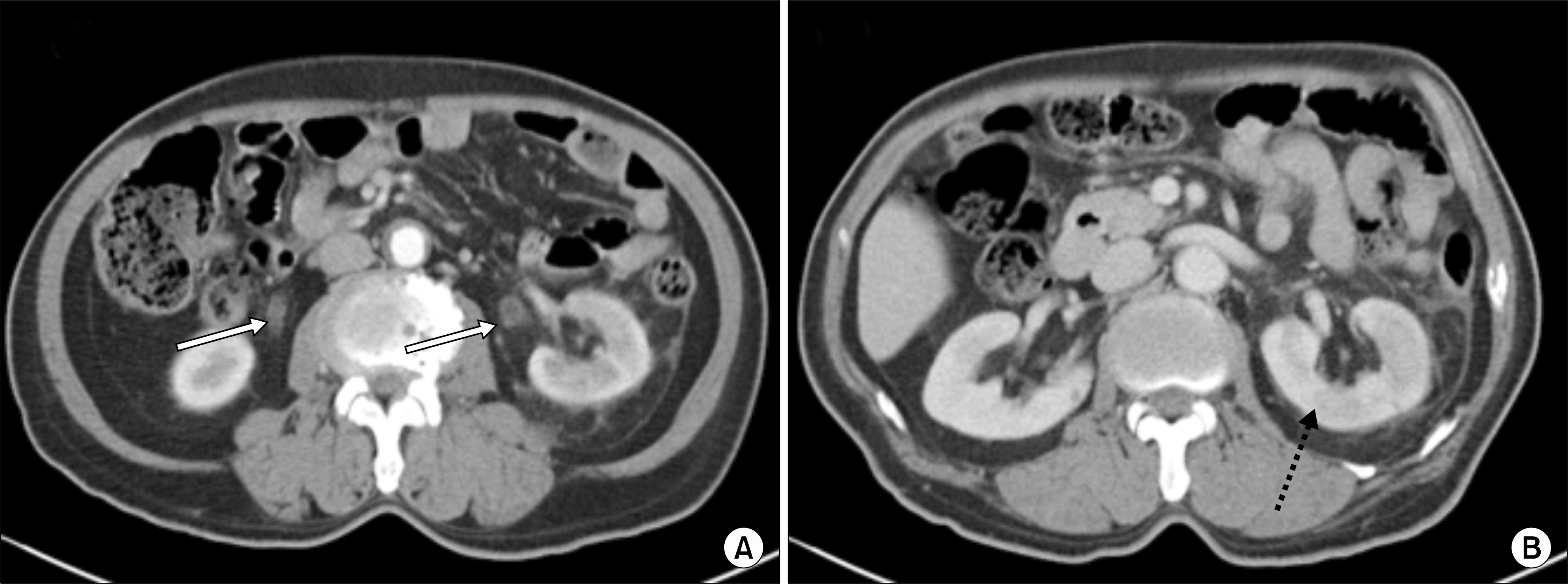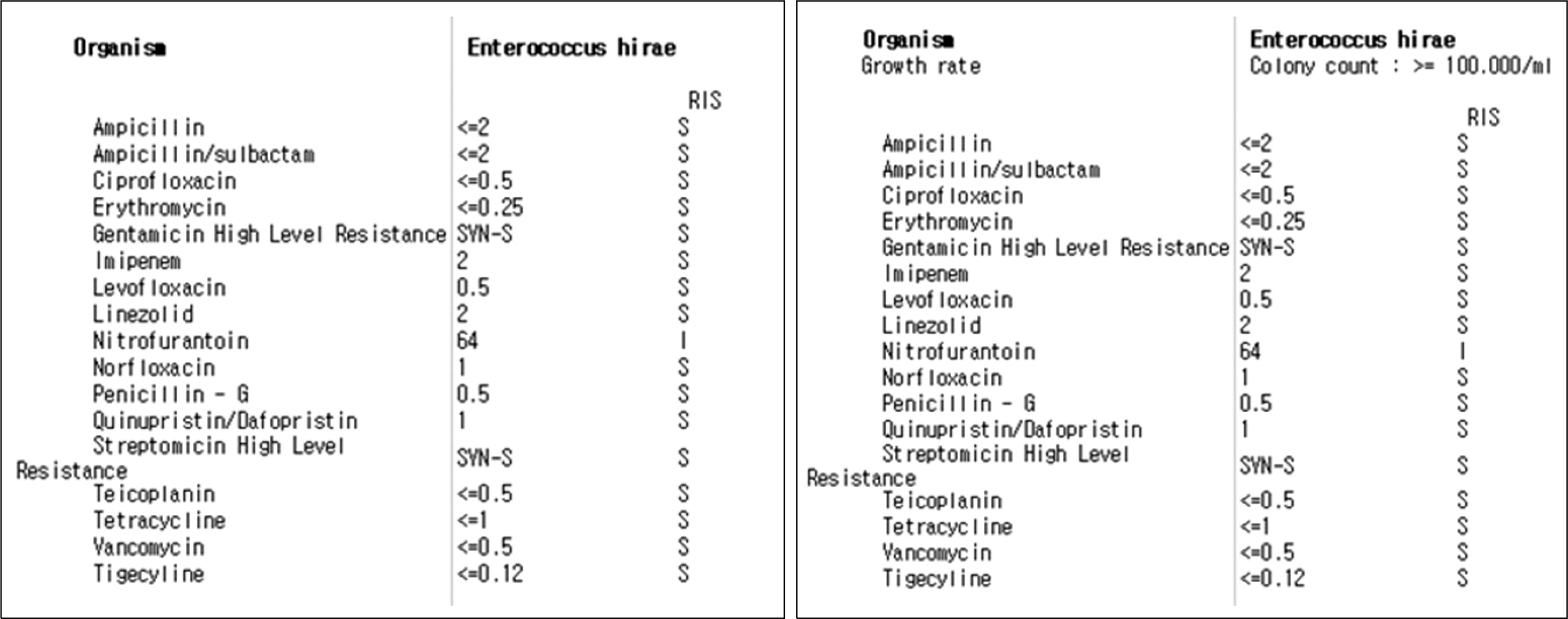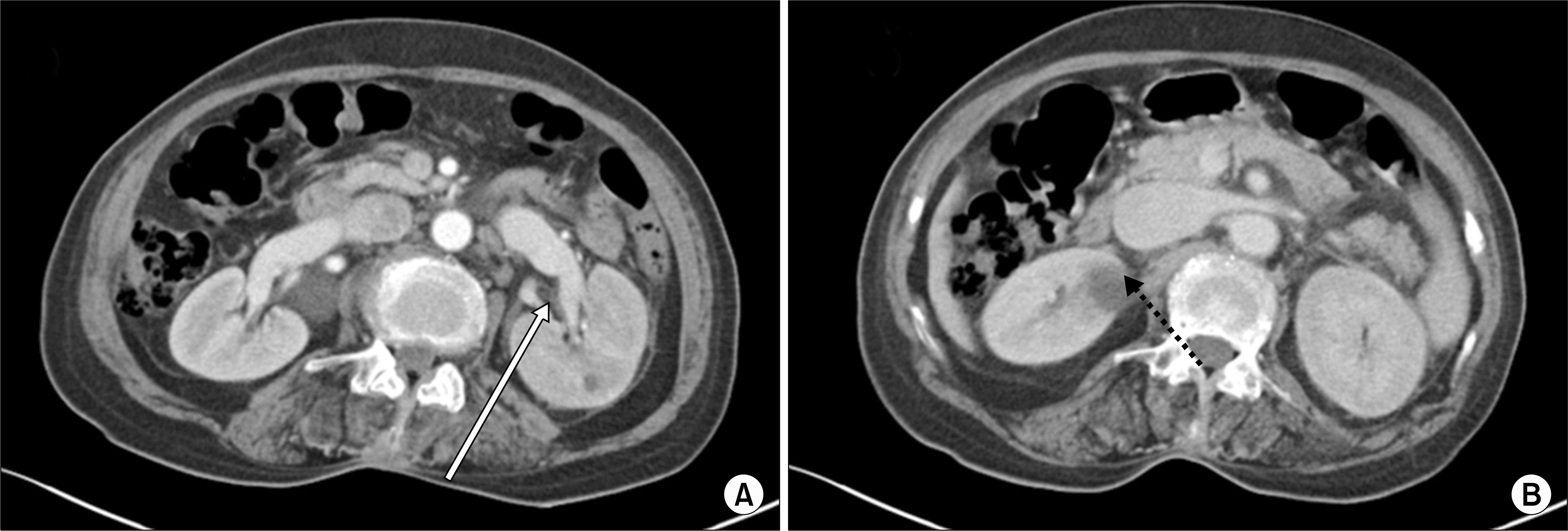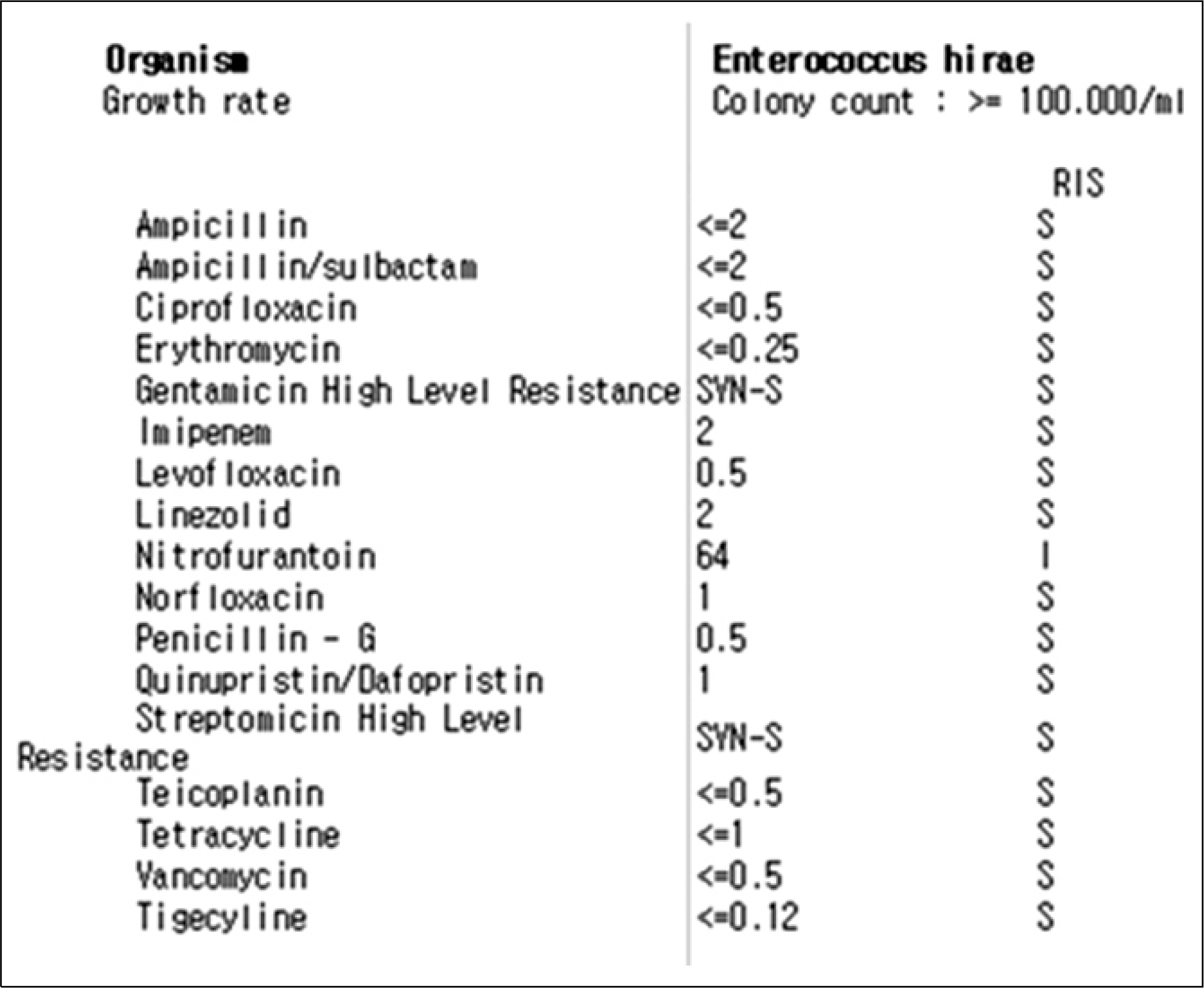Abstract
To control for acute infectious disease, identification of the causative agent and determining the antibiotic susceptibility of the pathogen are crucial. If a particular organism is rare and relevant etiological information is scarce, it becomes difficult to determine appropriate antibiotic and therapy duration. Enterococcus hirae is a pathogen that infects animals, but rarely causes human infections. We present two cases of E. hirae-related pyelonephritis with successful treatment. Herein, our experience is discussed with relevant literature review.
REFERENCES
1.Canalejo E., Ballesteros R., Cabezudo J., Garcia-Arata MI., Moreno J. Bacteraemic spondylodiscitis caused by Enterococcus hirae. Eur J Clin Microbiol Infect Dis. 2008. 27:613–5.

2.Pai H. Treatment of community-acquired uncomplicated urinary tract infection. Korean J Med. 2011. 81:685–9.
3.McNamara EB., King EM., Smyth EG. A survey of antimicrobial susceptibility of clinical isolates of Enterococcus spp. from Irish hospitals. J Antimicrob Chemother. 1995. 35:185–9.

4.Kim KH., Yoon JH., Kim TH., Yoon HJ., Cheon JY., Jin SJ, et al. A case of acute pyelonephritis caused by enterococcus hirae in a patient with a horseshoe kidney. Korean J Med. 2014. 87:369–72.
5.Kim HI., Lim DS., Seo JY., Choi SH. A case of pyelonephritis accompanied by enterococcus hirae bacteremia. Infect Chemother. 2009. 41:359–61.
6.Moore DF., Zhowandai MH., Ferguson DM., McGee C., Mott JB., Stewart JC. Comparison of 16S rRNA sequencing with conventional and commercial phenotypic techniques for identification of enterococci from the marine environment. J Appl Microbiol. 2006. 100:1272–81.

7.Chan TS., Wu MS., Suk FM., Chen CN., Chen YF., Hou YH, et al. Enterococcus hirae-related acute pyelonephritis and cholangitis with bacteremia: an unusual infection in humans. Kaohsiung J Med Sci. 2012. 28:111–4.

8.Paosinho A., Azevedo T., Alves JV., Costa IA., Carvalho G., Peres SR, et al. Acute pyelonephritis with bacteremia caused by enterococcus hirae: a rare infection in humans. Case Rep Infect Dis. 2016. 2016:4698462.
9.Brule N., Corvec S., Villers D., Guitton C., Bretonniere C. Life-threatening bacteremia and pyonephrosis caused by Enterococcus hirae. Med Mal Infect. 2013. 43:401–2.
10.Park J., Uh Y., Jang IH., Yoon KJ., Kim SJ. A case of enterococcus hirae septicemia in a patient with acute pyelonephritis. Korean J Clin Pathol. 2000. 20:501–3.
Fig. 1.
Computed tomography scans of the first patient. (A) Contrast-enhanced phase; prominent wall thickening and enhancement in both ureters (line arrows). (B) Delayed phase; multifocal wedge shaped poor enhancing lesion in the left kidney (dotted line arrow).

Fig. 2.
Antibiogram of the first patient. Left column for blood culture result and right column for urine culture result.

Fig. 3.
Computed tomography scans of the second patient. (A) Contrast-enhanced (B) delayed phase show diffuse left renal swelling and left perinephric fat infiltration. Diffuse wall thickening of the left ureter (line arrow). Simple renal cyst (dotted line arrow).

Table 1.
Reported cases of human infections (acute pyelonephritis) due to Enterococcus hirae
| Origin | Reference | Year | Sex/age (y) | Morbidity | Culture | Treatment | Day |
|---|---|---|---|---|---|---|---|
| Domestic | Park et al. [10] | 2000 | F/21 | Birth control pill | B | FLO+ISP→AMP+ISP | 10 |
| Kim et al. [5] | 2009 | F/57 | Rheumatoid arthritis | B, U | CIP→ CRO+AG→AM-SB | 14 | |
| Kim et al. [4] | 2014 | M/84 | Horseshoe kidney | U | CIP→AM-SB | 14 | |
| Overseas | Chan et al. [7] | 2012 | F/62 | Constipation | U | CFZ+Gent→AMP→Amox | 12 |
| Paosinho et al. [8]a) | 2016 | F/78 | Afib, CKD | U | AM-CL→PIP-TZ | 14 | |
| Brule et al. [9]b) | 2013 | M/44 | ALD, DCMP | B, U | CRO+Metro+AMK→Amox | x 25 |
F: female, B: blood, FLO: flomoxef sodium, ISP: isepamicin, AMP: ampicillin, U: urine, CIP: ciprofloxacin, CRO: ceftriaxone, AG: aminoglycoside, AM-SB: ampicillin-sulbactam, M: male, CFZ: cefazolin, Gent: gentamicin, Amox: amoxicillin, Afib: atrial fibrillation, CKD: chronic kidney disease, AM-CL: amoxicillin-clavulanic acid, PIP-TZ: piperacillin-tazobactam, ALD: alcoholic liver disease, DCMP: dilated cardiomyopathy, Metro: metronidazole, AMK: amikacin.




 PDF
PDF ePub
ePub Citation
Citation Print
Print



 XML Download
XML Download